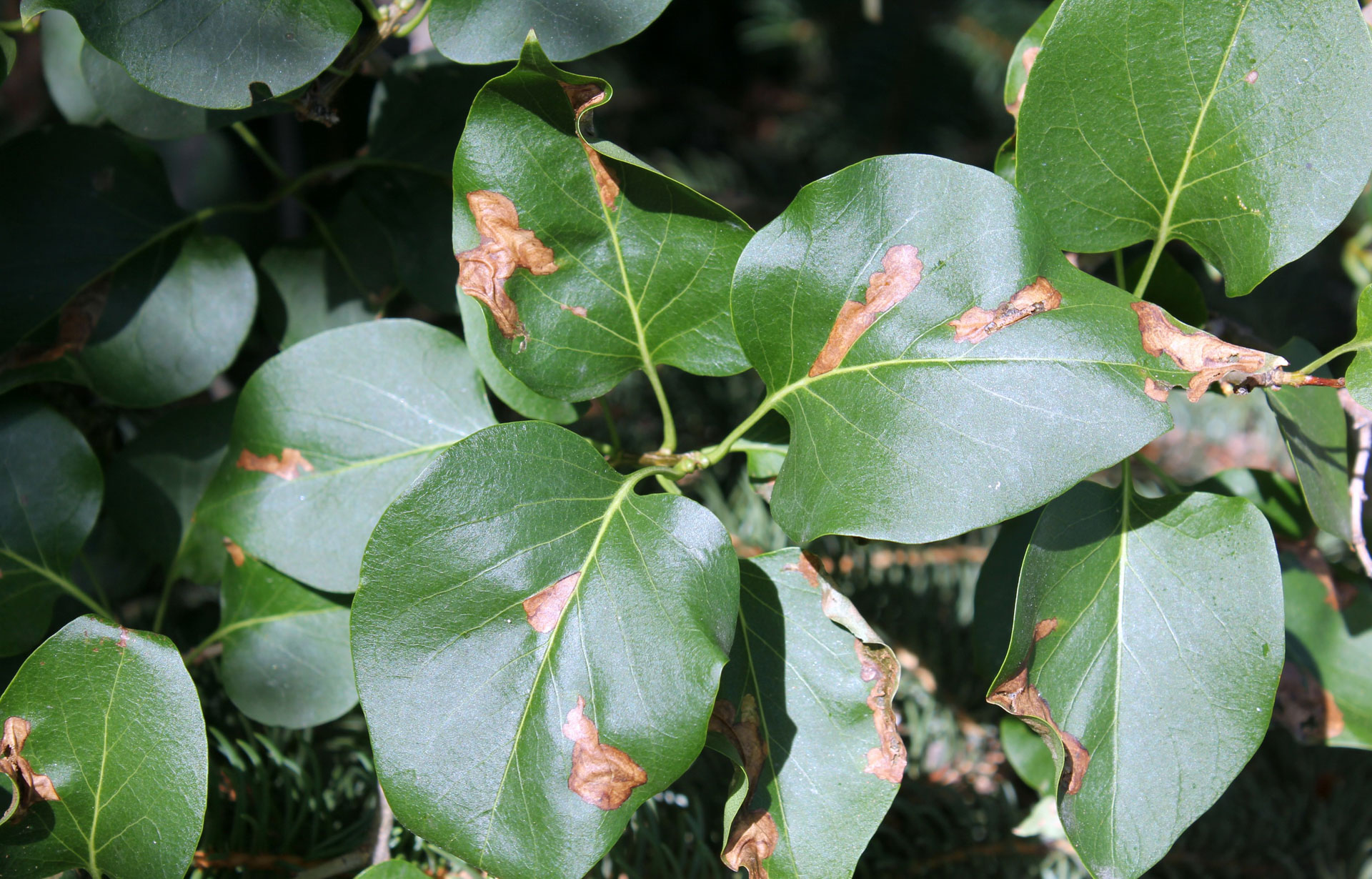By Ann Hazelrigg, Extension Plant Pathologist, University of Vermont
Lilacs (Syringa vulgaris) can be stunning in early summer when in full bloom, but this time of year they tend to look a bit worn out. There are three common problems that can impact the health of these shrubs: lilac leaf miner (Gracillaria syringella), powdery mildew (Erysiphe syringae) and a fungal leaf disease called lilac leaf blight (Pseudocercospora sp.).
The lilac leafminer adult moths are yellow and about a 1/2-inch long and live throughout the Northeast. In the summer, eggs are laid along the veins on the undersides of lilac or privet leaves.
After hatching, the larvae enter the leaf and create a linear mine easily seen from the leaf underside. As the larvae grow and feed protected within the leaf, the mines become larger and more blotch-shaped.
The larvae emerge from the mine, then fold and skeletonize the leaf. They then form a narrow white cocoon within the fold where they overwinter on the dropped leaves. With heavy infestations, the browned leaves may drop prematurely. At least two generations of this species can occur each year.
You can remove and destroy infested leaves to kill the mining larvae throughout the season. Raking and destroying the fallen leaves at the end of the season may help reduce the overwintering populations. Insecticide control is rarely warranted.
Powdery mildew is a common fungal disease that attacks a lot of plants including common lilacs. Although you may see powdery mildew on many different plants at the same time, this pathogen is very specific to its host, so the powdery mildew on your squash is not the same pathogen as that attacking the lilac.
All powdery mildews are favored by the same conditions: high humidity, cool nights and warm days, so it tends to show up on several different hosts at the same time. The powdery white spots typically occur on the lower or inner leaves and quickly move through the plant until most of the leaves are covered in white fungal growth by late summer. Fortunately, powdery mildew on lilacs is usually only an aesthetic issue.
If planting new lilacs, consider resistant cultivars to avoid the disease. Be sure to plant lilacs in a sunny location, and prune and thin the plant regularly to help improve air circulation and minimize disease. Rake and destroy leaves in the fall to help reduce infection next year.
Lilac fungal leaf blight symptoms start as brown spots on the leaves that begin at the edges. As the infection progresses, the spots can coalesce and cause leaves to curl and eventually drop. The fungus is favored by rainy or humid weather.
Although it may look like your lilacs are dying, if you scratch just under the bark near the end of a twig and still see green, and if the terminal buds for next year are obvious, the plant will be fine in the spring. Over several years of defoliation, however, the plant may be weakened. Thin the plant during winter to improve air circulation, and rake and destroy infected leaves in the fall to reduce the infection next year.
Dr. Ann Hazelrigg is the University of Vermont Extension plant pathologist and director of the UVM Plant Diagnostic Clinic.




